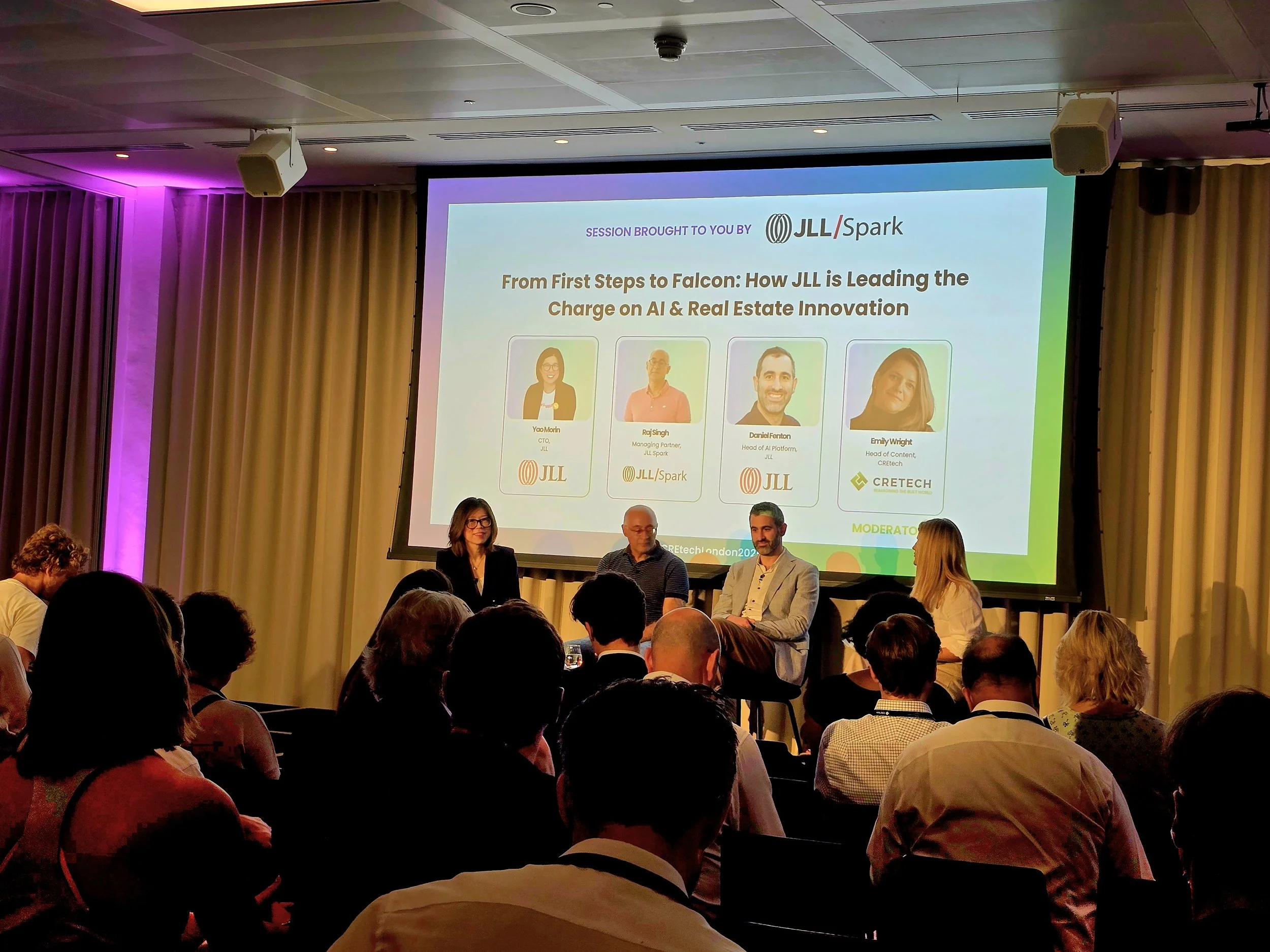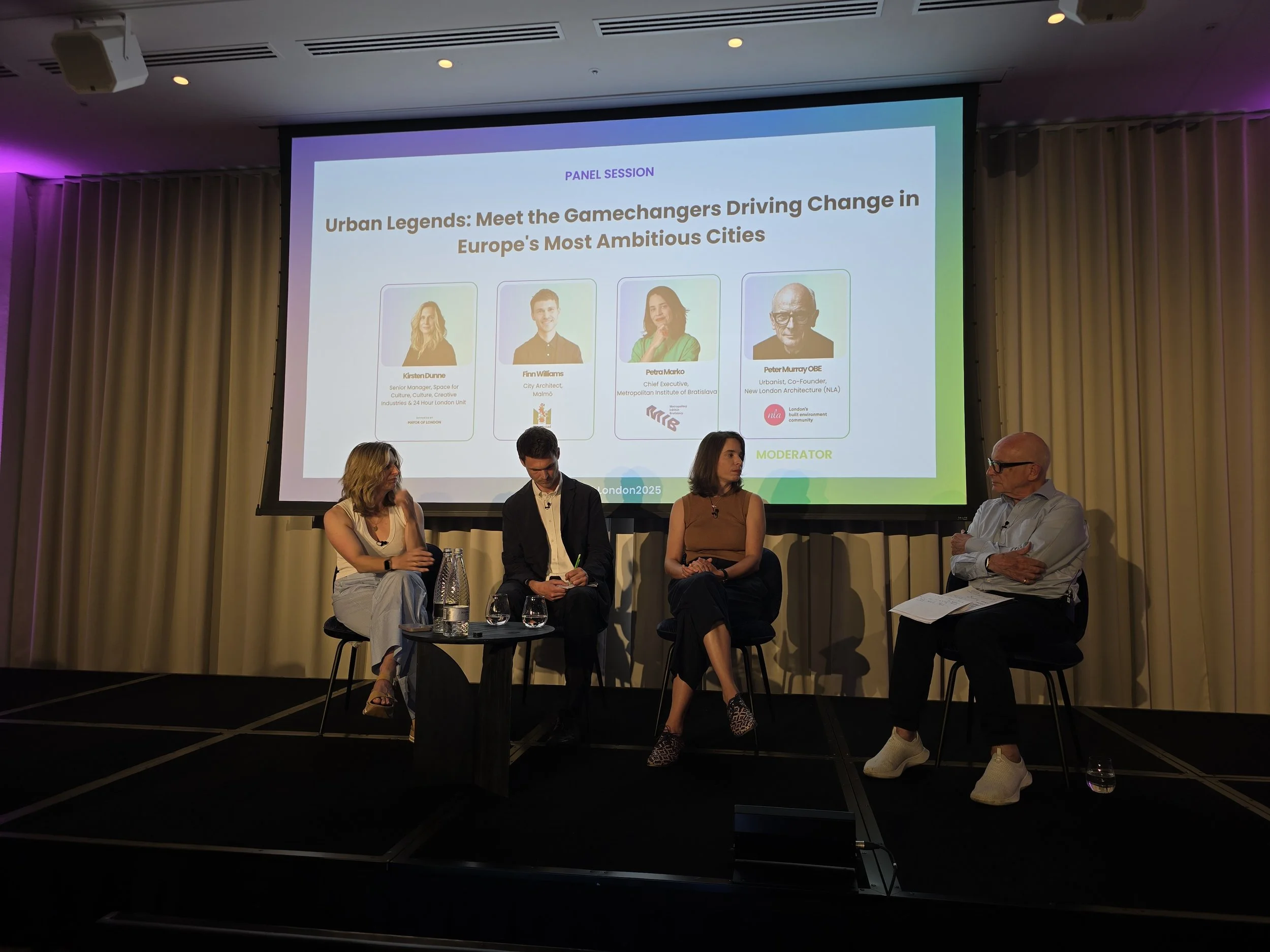Europe 2030: Why the Next Five Years Will Redefine Real Estate
Post-event reflections from CREtech London 2025
What does it take to design a built world that’s ready for the next decade, and beyond?
That was the question underpinning Europe 2030, CREtech’s annual London conference that gathered C-Suite leaders, cultural thinkers, and tech innovators to explore the seismic shifts transforming real estate. On 1st July 2025, attendees were offered a front-row seat to the future, and a sharp reminder that the timeline is shorter than we think.
With 2030 looming as a critical deadline across climate, culture, and capital agendas, the real estate sector faces a make-or-break moment. This isn’t just about innovation for innovation’s sake, it’s about reimagining how we build, live, and lead in an era shaped by AI, climate urgency, shifting user expectations, and social responsibility.
The next five years will redefine what “value” means in the built environment.
JLL Panel
Highlights & Takeaways
The energy at Europe 2030 was electric, charged with urgency, optimism, and a shared sense that the real estate sector is no longer evolving slowly, but being reshaped at speed.
While the topics ranged from AI and critical infrastructure to culture and climate resilience, expertly chaired by Emily Wright, a few standout themes emerged. Below are five key reflections that reveal not just where the industry is headed, but how we can lead with impact.
1. We don’t need to code. But we do need to care.
JLL’s leadership team, Raj Singh, Yao Marin, and Daniel Fenton, emphasised that the industry doesn’t need to build the tech itself but must become expert users of AI. With tools like JLL GPT, Horizon, and their internal hackathon platform Falcon, they are embedding AI into every layer of the organisation.
“As an industry, we don’t have to start coding and create the tools ourselves, but we do need to become expert users of AI.”
“The AI will not replace your jobs. The people using AI will take your jobs.”
AI isn’t just here to automate. It’s here to help people do what only they can do, better and faster. But the pace of adoption matters.
“It will be incredibly difficult to catch up with competitors who do it well.”
Kirsten Dunne, GLA
2. Creativity comes from managing anarchy.
Roger Madelin CBE spoke to the role of the developer as a cultural broker, not just delivering spaces, but allowing serendipity, authenticity, and even a bit of urban grit to thrive. Great places aren’t sterile; they are lived in, loved, and sometimes a little unruly.
“To be cool, you have to let cool things happen. It won’t happen through the branding machine. The best places you want to work in are the places you want to be in.”
Roger Madelin CBE, British Land, 2nd from right
3. Data is sexy again.
In a world increasingly driven by machine learning and intelligent automation, clean, accessible data is the new premium asset.
“The payoff is going to be much more if we encourage people to clean up the data and upload it. Data is in my head or on my computer, it needs to be in the system. ”
Across the board, the message was clear: feed the system, guard your data, and stop letting it sit unused. Because once AI is in play, that data becomes your competitive edge.
“We’re not rewiring for tech. We’re rewiring for life.”
Culture panel with Peter Murray
4. Culture is not a luxury. It's infrastructure.
Kirsten Dunne from the GLA warned that London has lost 40% of its music venues, 50% of its nightclubs, and 30% of its artist spaces. The city’s cultural fabric is fraying, and it's time to hardwire protection into planning policy.
“Culture is the story we tell about ourselves. It’s also the reason people come to London. But it’s not something we can take for granted.”
But what was the answer?
Map it. Protect it. Fund it. From theatre partnerships with developers to new lease language and risk registers, cultural infrastructure must be treated as essential.
GLA’s cultural infrastructure map
5. Climate-neutral construction is no longer optional.
Across Europe, pioneers like Malmö City Architect Finn Williams and Bratislava’s Chief Urban Planner Petrol Marko are proving that low-carbon construction isn’t a fantasy.
“Climate-neutral construction is the only way of building in the future. Best to test and get ahead of the curve now.”
From building lift cores in timber to crowd-sourced, real-time policy frameworks, the innovation is already happening but we need to scale it.
Finn Williams, Malmö City Architect
Life, Not Just Logistics
Underneath all the talk of AI, capital, and construction, the recurring theme was human-centred design. From flexible workplaces to biophilic environments, from protecting club spaces to building with children in mind, this is ultimately about life. As Laura Flanagan of Greenwich Peninsula put it, “Start with the user. Ask who is the person using this space?”
Because while AI may change how we work, and climate targets may change how we build, our purpose remains the same: to create places that are made for people.
Final Word
This event was a powerful reminder that the next five years aren’t just about technological evolution, but values, vision, and velocity. At Concept Culture, we’ll be taking these insights forward as we continue to tell the stories that shape more sustainable, inclusive, and exciting futures.
Let’s not wait until 2030 to act like the future is already here.
Are you looking for advice on how to create an engaging story for your place?
If you need help defining your target audience, developing your place narrative, expressing your place story, or ensuring your story reaches your audience, please get in touch. We’d love to offer you tailored branding and marketing support to grow and elevate your place brand through the power of storytelling.
Book a discovery call with us to discuss your branding needs.





